The M67 flamethrower tank is one of the iconic American weapon systems from the Vietnam War. Nicknamed the “Zippo,” these flame tanks gave soldiers and Marines a tactical advantage against fortified enemy units.
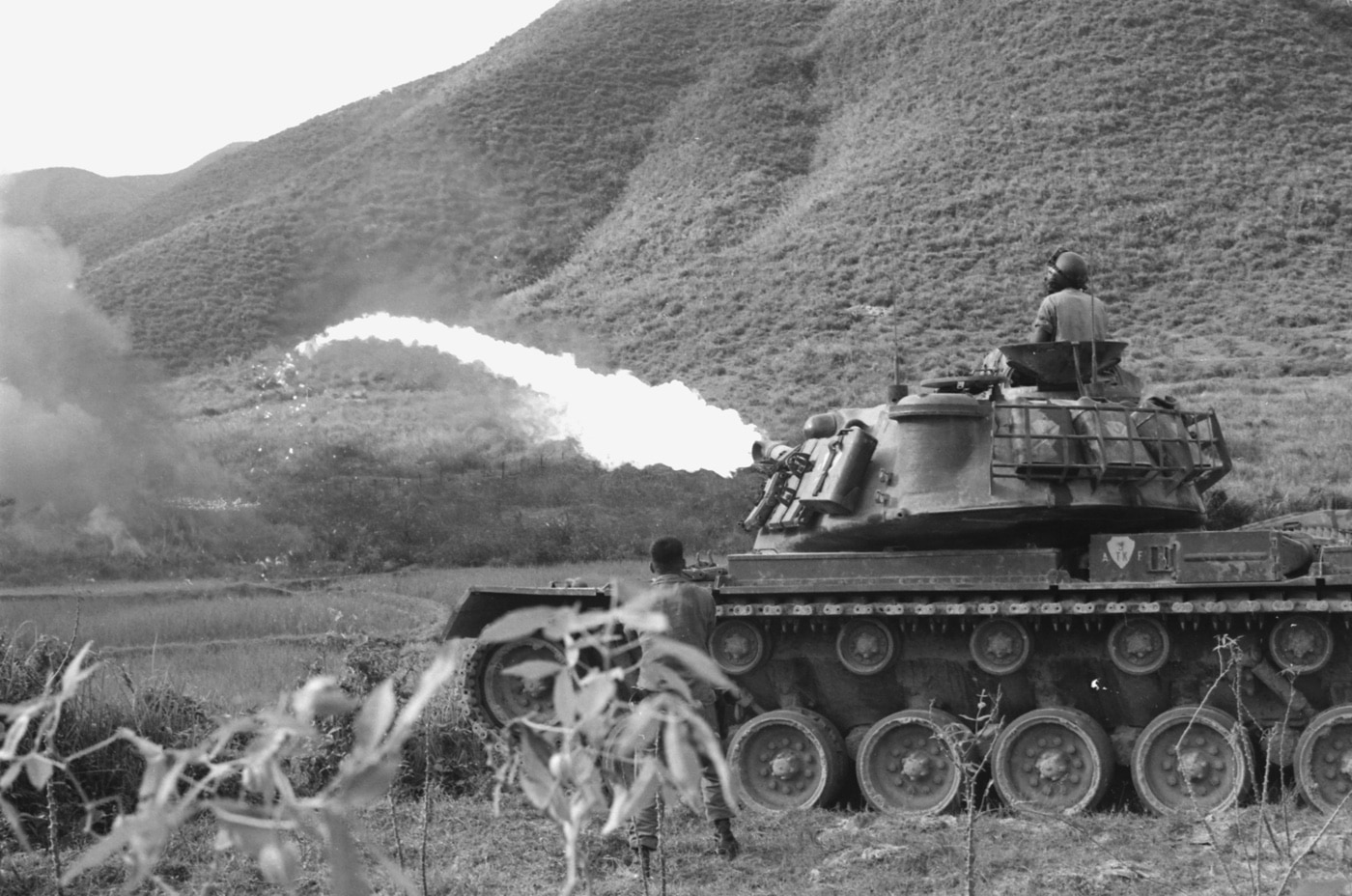
Since March 7, 1994, the United States Department of Defense has prohibited smoking worldwide in all workplaces and vehicles owned by the Pentagon. Moreover, smoking is even prohibited during basic training. Yet, there was a time when smoking and the U.S. military went hand in hand. During the Second World War, Zippo ceased production of lighters for the consumer market and dedicated all production to the U.S. military. Even today, Zippo produces a line of military-themed commemorative lighters.
However, the lighters aren’t the only connection between Zippo and the U.S. military.
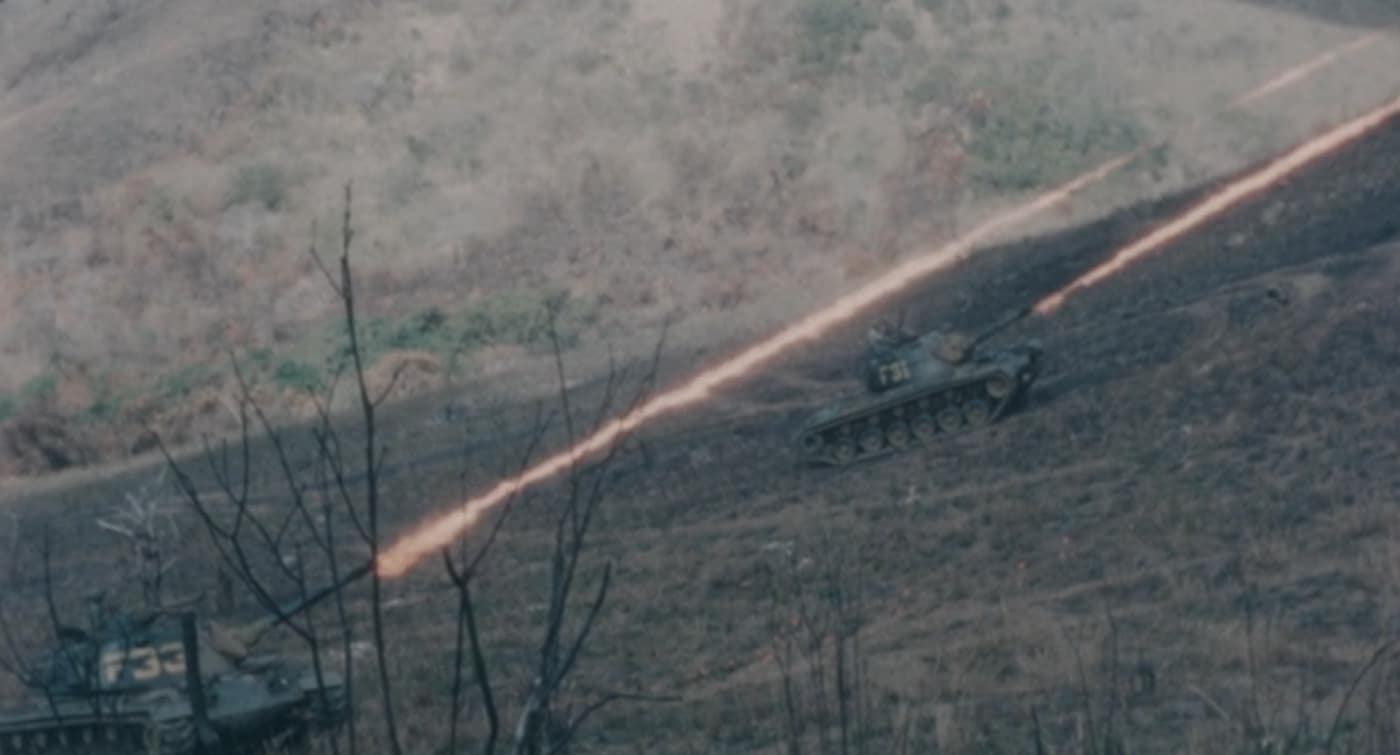
One of the most effective flamethrower tanks in the U.S. military’s arsenal was the “Flame Thrower Tank M67” — more commonly known as the M67 “Zippo.” It saw service with the United States Army, and later by the United States Marine Corps during the war in Vietnam. Though it was the last flamethrower tank used by the U.S. military, it wasn’t actually the first.
A Brief Service History of Flamethrower Tanks
Modern flamethrowers saw their horrific entrance on the battlefield during World War I. German flammenwerfer units experienced moderate successes, prompting the other powers to explore the use of the weapons also. World War I also introduced the tank to the battlefield.

It isn’t any significant surprise to find that the world’s armed forces might want to combine the two. The Soviet Union experimented with flamethrower tanks in the interwar era and adopted several models, including the KhT-27 and the KhT-26 among others.
During the Second World War, the Axis nations of Germany, Italy, and Japan also produced a number of tanks that could shoot flames to varying degrees of success.
The first U.S. flamethrower tank was actually the ominously-named “Satan,” a modified conversion of the M3 Stuart light tank. In place of its main gun, it was fitted with a “Ronson” flamethrower. The M3 Satan was used alongside M4 Sherman tanks that were also fitted with bow-mounted E4-5 flamethrowers to great effect against the heavily entrenched Japanese forces in the Pacific.

United States Marines experienced firsthand the capabilities of flame tanks in the Pacific, as it primarily used tanks in a close infantry support role due to the fact that the type of island hopping campaigns meant there were no significant tank battles — at least not on the scale of those in the European Theater.
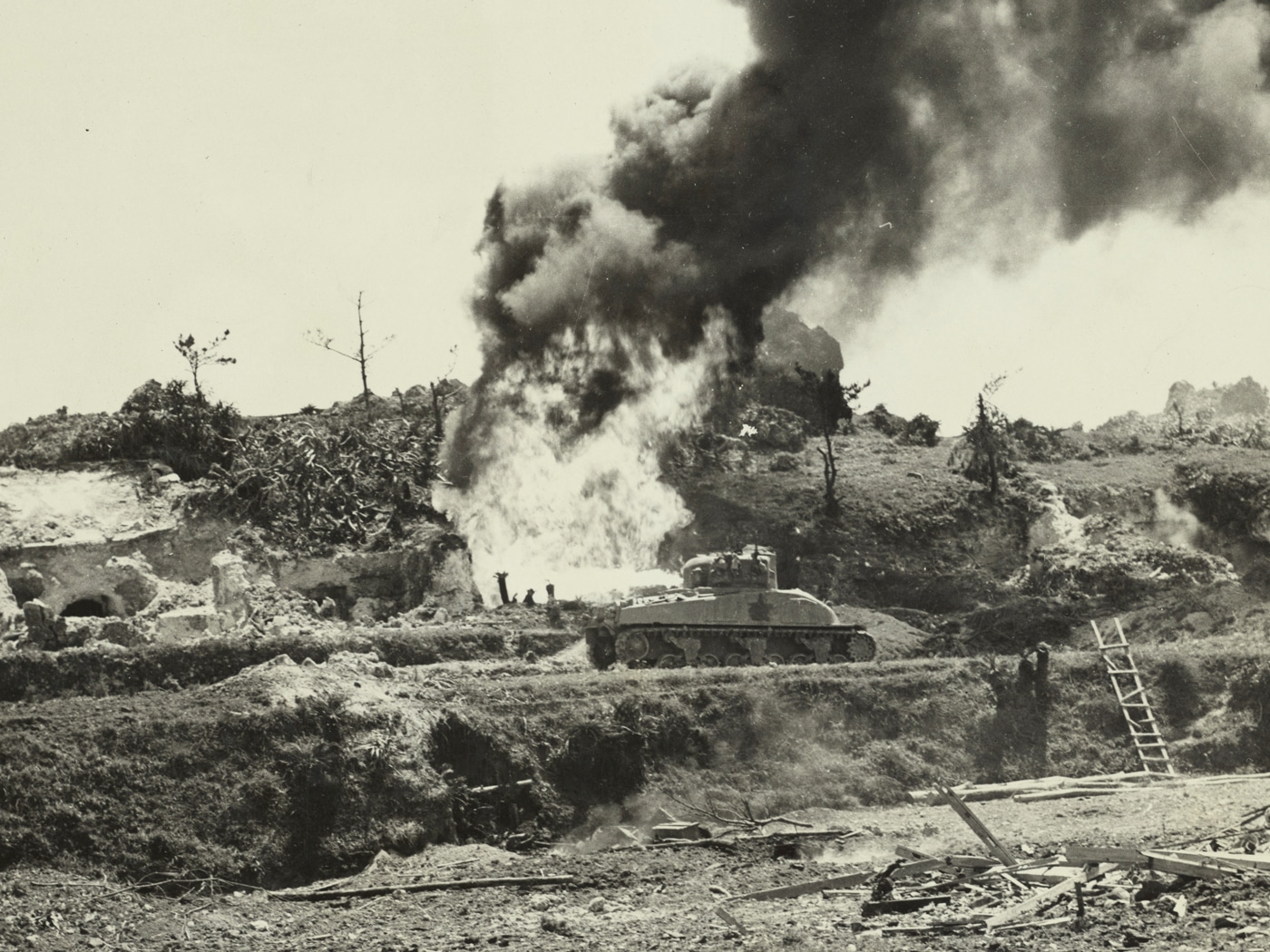
During the Korean War, the U.S.M.C. sought a more effective platform to replace the aging M4 Sherman. That led to a request to the development of a M67, which was based on the M48 Patton with its 90mm gun.
Enter the M67
Production of the M67 began in 1952 and continued until 1954. The tank was, however, too late for the war in Korea. Nevertheless, the Marine Corps leadership apparently liked what they saw in the newly designed flame tank. A total of 109 were produced, and while the Army also adopted it briefly, only the Marines actually headed into combat with the flame thrower tank.

What is also notable is that there were actually three versions produced including an M67 on the M48A1 chassis, the M67A1 on the M48A2 chassis, and the M67A2 on the M48A3 chassis. The only difference was in said chassis, as the flamethrower was identical on all models. Each tank weighed around 48 metric tons, a bit heavier than the M48 Patton — due to the flamethrower system and internal fuel tank.
Externally there were a few differences from the basic M48 Patton medium tank.

The M67 was fitted with a flame tube that was actually disguised to resemble a 90mm main gun, albeit the shroud was noticeably wider in diameter and a bit shorter. In hindsight, it was actually somewhat ironic that efforts were made to conceal the flamethrower as it proved to be a terrifying weapon, and one genuinely feared. However, the mock-up gun was fitted to the M67 to disguise it while on the move.
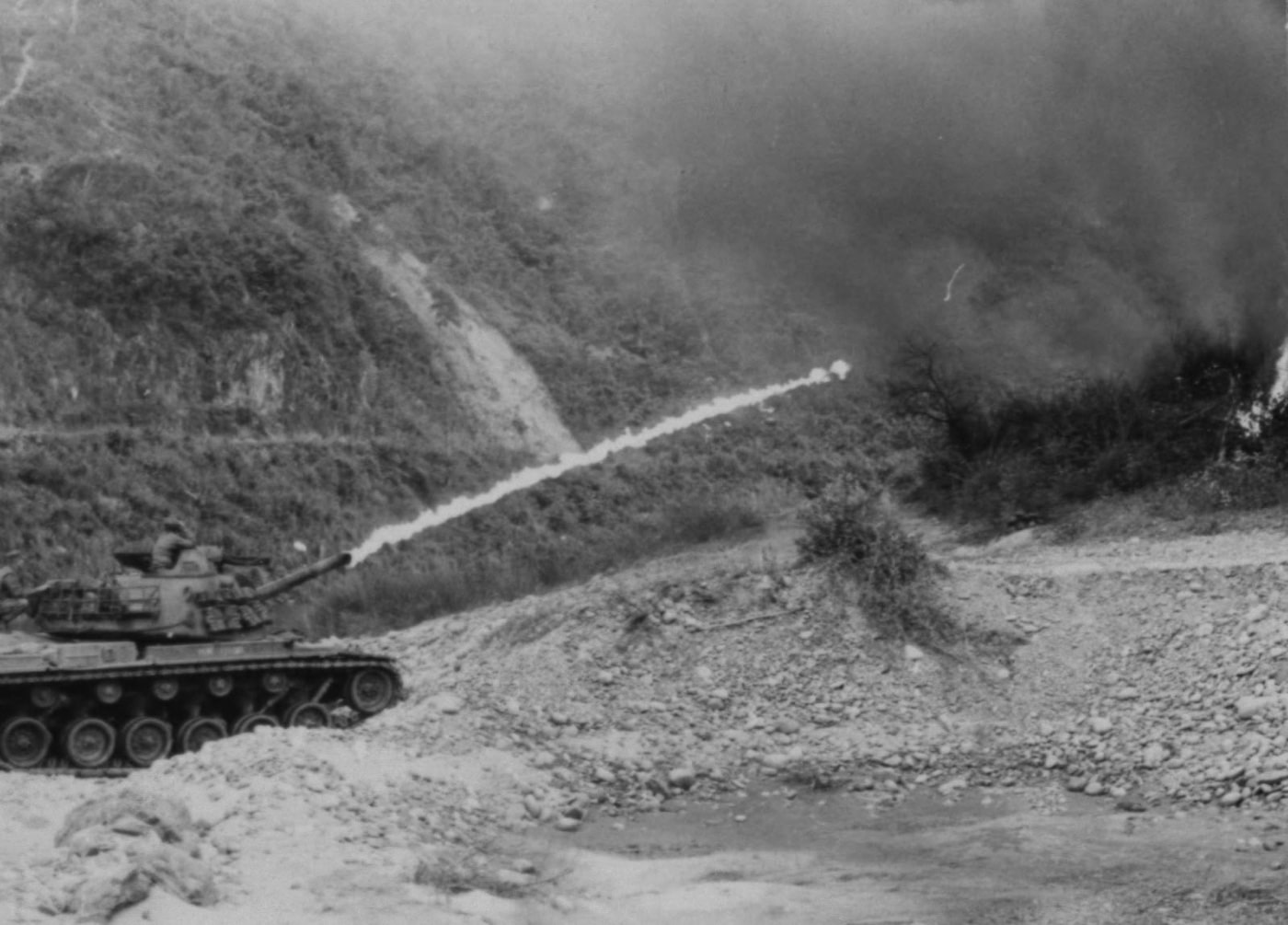
The flame tube was also heavier than the 90mm T54 gun, and though it shared many of the elevation and traverse components that were employed on the M48, the M6 Flame Gun required a complicated shroud, which made the muzzle heavy. This required that a hydraulic equilibrator device be introduced so as to balance the weapon.
Instead of a crew of four that was employed on the M48 Patton, the M67 actually had a crew of three — as it required no loader. Instead, a huge fuel tank was placed in the loader’s position within the turret. This meant that the gunner was charged with operating both the flame gun as well as the coaxial .30 caliber Browning M1919 air-cooled machine gun. It wasn’t an ideal setup, but there weren’t really any other options available.
All tanks can be described as cramped, and the M67 even more so.

Within the turret was a large 398-gallon central “tank,” which held “thickened gasoline,” more commonly known as napalm, which was put under pressure, and ignited by a 24,000-volt electric spark. The total burn time in operation was around a minute, depending on the size of the nozzle employed. Nozzles of 19 mm (.75-inches) and 22 mm (.88-inches) were the most common. The flame tube had an approximate range of 280 yards (256 meters).
Due to the fact that the M67 didn’t need to carry standard ordnance, the ammunition racks for the 90mm ammunition to the left and right of the driver were removed and replaced by stowage bays. This allowed for tools, spare parts for the equipment, and ammunition for the machine gun to be stored.
Baby, Won’t You Light My Fire
In what can only be described as perhaps one of the most bizarre coincidences in modern military history, in January 1967 the American rock band The Doors released their hit single “Light My Fire.” The song would go on to spend three weeks at number one on the Billboard Hot 100 Chart later that same year, and while not as potent of an anti-war song as the group’s “The Unknown Soldier,” it has come to be associated with the Vietnam War.

It was, of course, in that conflict where the M67 Zippo saw its only actions.
Details are sparse on how many of the flamethrower tanks were actually sent to Southeast Asia, but it was first employed in combat in August 1965 during Operation Starlite, the Battle of Van Tuong. It was the U.S. military’s first major action in the war, and during the battle, a number of M67s were ambushed and destroyed.
It wasn’t an ominous baptism of fire, yet the M67 did prove to be well-suited to the guerilla nature of the Vietnam War, and it was often employed to incinerate patches of jungle that may have concealed an enemy position. Such attacks took on the name “Rods of Flame,” and the Zippo was widely feared by the Viet Cong forces.
Urban Combat with the Zippo
It wasn’t just in the jungles where the M67 saw success.
During Operation Dozer, and the Battle of Hue, a pair of M67 Zippos accompanied by a number of M48 Patton tanks led the armored strike into the ancient Vietnamese city. The M67 proved even better suited to the urban combat in Hue than it did in the jungles. However, throughout its service, the M67 needed to be accompanied by a pair of 2 1/2 ton trucks that carried the equipment and supplies for the flamethrower. In most cases, one truck would carry the Napalm supply, while another would be employed to recharge the compressed air system. The need for such support restricted the type of operations where the tank could be used, while it also meant that efforts needed to be made to protect those trucks.

Another issue that limited the success of the M67 was that the flamethrower was noisy — even by tank standards. When the flamethrower was in use, the level of the internal noise within the vehicle was so loud that the commander and gunner would barely hear each other over the intercom. There are reports of tank commanders putting their heads out of the turret so as to direct the gunner. In a firefight that was also far from ideal.
Legacy of the M67
The M67 wasn’t actually the only armored flamethrower to see service in the war. The other was the Self-Propelled Flame Thrower M132, a modified M113 armored personnel carrier (APC), which was fitted with much of the same equipment. It was employed in a limited role by the United States Army. However, the Army never had the same faith or success with the M132 as the Marines did with the M67.
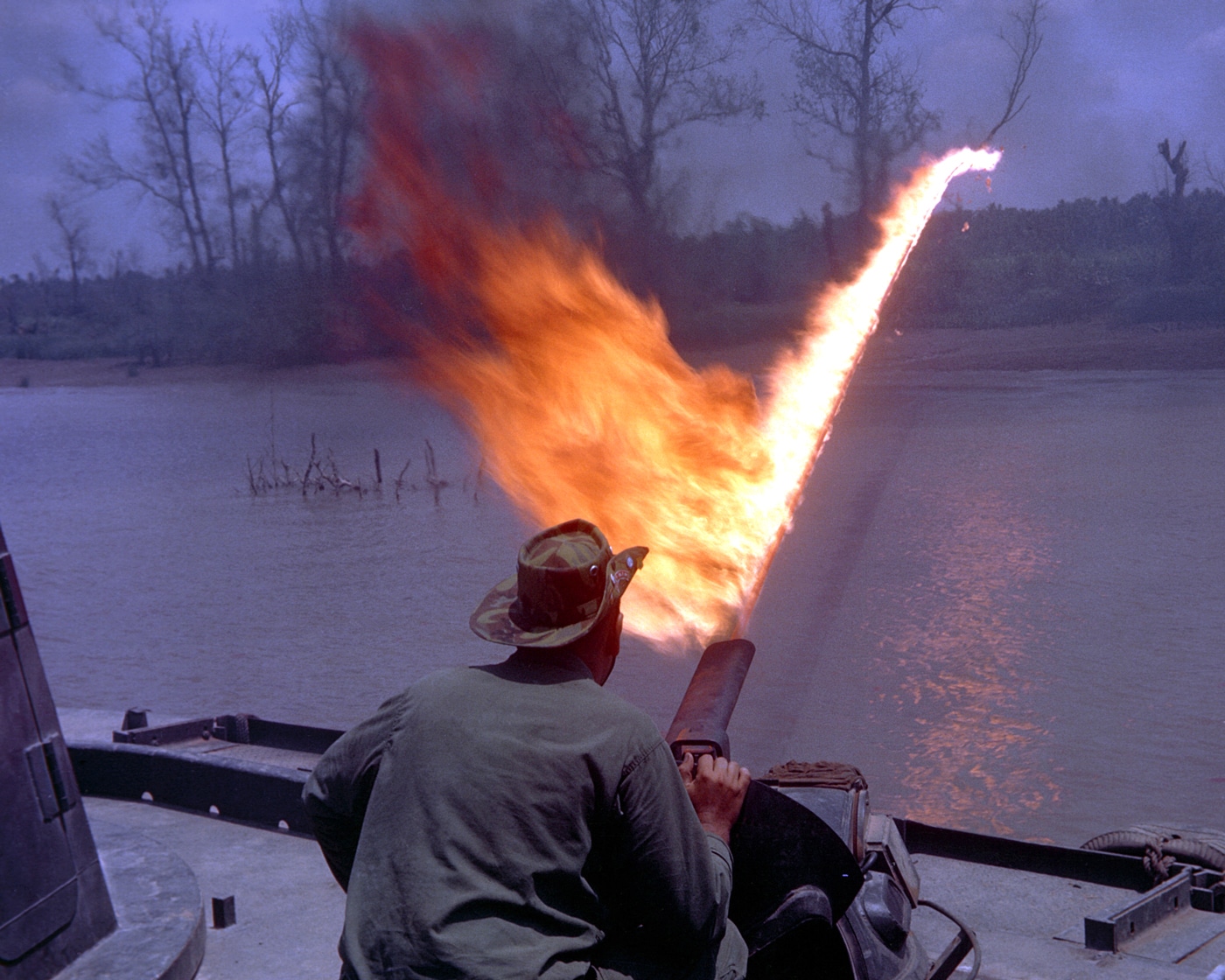
Soon after the U.S. withdrew its forces from Southeast Asia, the Zippo was essentially snuffed out. The M67 was officially retired from service in 1974 without a replacement. It was the last flamethrower tank to be employed by the U.S. military.
Of the 109 that were produced, it is an actual mystery as to how many actually survive. According to Tanks-Encyclopedia.com, one was on display at the now-closed U.S. Army Ordnance Museum at the Aberdeen Proving Grounds in Maryland. All of the vehicles have been relocated to Fort Benning, Georgia — but as of press time, the M67 Zippo isn’t believed to be on display. Another can now be found outside the Engineering School at Fort Leonard Wood, Missouri.
These serve as the final reminders of the M67 Zippo.